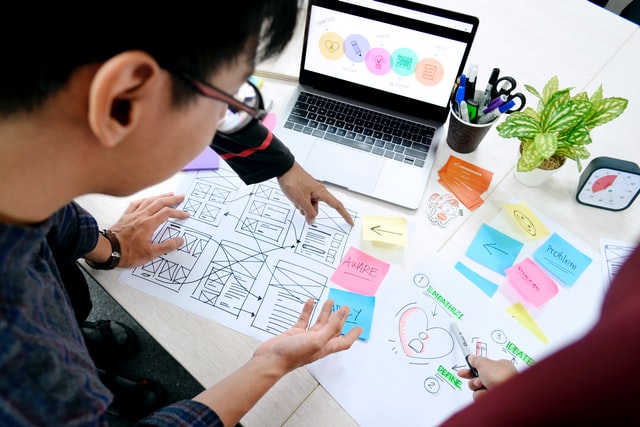To Design A Successful Education, Start at Winter Break
Design thinking is a burgeoning field and phrase that piques the curiosity of many industrious individuals. Across disciplines, design thinking has mapped the way for increased satisfaction in life, career, and now education. So, a combination of reflection and neuroscience intersect here. As we find ourselves in the Winter season, it is worth thinking about designing a more successful life and how starting at Winter break can begin that path in education.

What is Design Thinking?
The Harvard University School of Education denotes Design Thinking as “In practice, … a structured framework for identifying challenges, gathering information, generating potential solutions, refining ideas, and testing solutions.” Tenets of this process include intentionally failing and repeatedly trying new things until something sticks. A standard summary of the process looks like these five steps done over and over until a solution:
- Empathize. Think about yourself, your community, your audience. Is there a challenge that comes to mind?
- Define. After considering those that the challenge affects, think about why this problem exists and define that challenge clearly.
- Ideate. Brainstorm different ways you can address the challenge. Intentionally list assumptions of the challenge and attempt to defy them. List out bad ideas too! And impossible ones
- Prototype. Come up with solutions you’d want to test. Then, narrow down what is feasible
- Test. Test your solutions! See what works, what’s helpful, what’s not, and then try again!
As you can see, the process reflects thoughtfulness and emphasizes trial and error.

What does Design thinking have to do with happiness?
In 2018, Yale University was one early academic institution that brought the concept of design thinking to the forefront of education. In a class entitled “Psyc 157: Psychology and the Good Life,” psychologist Laurie Santos taught students how to regulate their daily lives and include moments of gratitude and self-care. As a part of the course, tenets of Design Thinking were encouraged, such as empathizing with yourself when you are experiencing new activities— actively asking, “Is this bringing me joy?” Another positive mindset that derives from Design Thinking is the concept of relating who you are, what you believe, and what you do. If you get stuck answering these questions, use the Design Thinking method!
Santos has since renamed her class “The Science of Well-Being,” and some 3 million individuals are now taking the course online.
How do I use Design Thinking during my winter break?
So, when it comes to implementing Design Thinking into your life and particularly your academic career, it’s important to remember what you care about.
First, take time this winter break to consider empathy for yourself, whether as a student or parent.
Then think of challenges you’ve faced in these roles of your life. What’s not working? What feels hard?
Next, come up with some solutions that may be impossible to happen: daydream about that vacation, take your favorite class on baking, and get perfect grades without studying so hard…
Then consider, “what might be some possible solutions to these challenges that nurture me and are feasible?” For example, does it make sense to do fewer activities to have more energy on the subjects you love? Does getting organized in school and with all the calendars prove helpful to make sure you have time to study when it counts and relax when you can?
Lastly, make sure to test out some of these ideas! Organize your calendar! Read a little more on that subject that’s been challenging! Talk to your teachers and see how you can optimize your studying for that ONE challenging class.
Remember, Design Thinking is all about trying things out until you find something that works. This is the perfect time to strategize for the upcoming year during winter break! To design a successful education, start at winter break!
